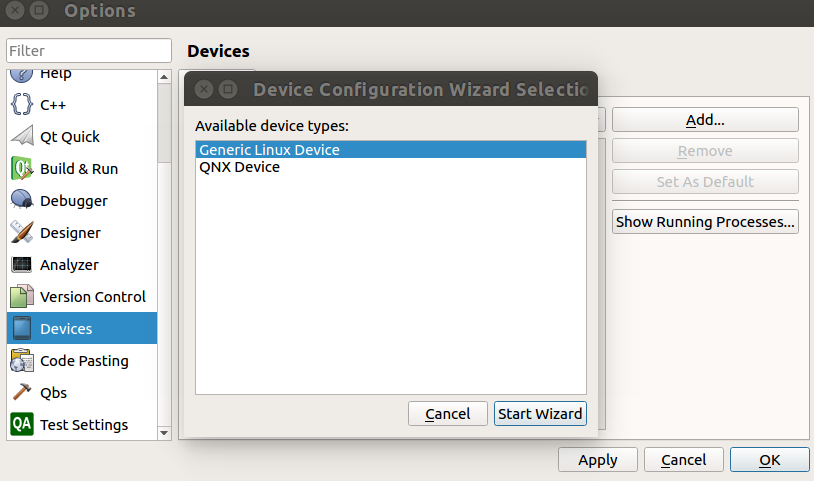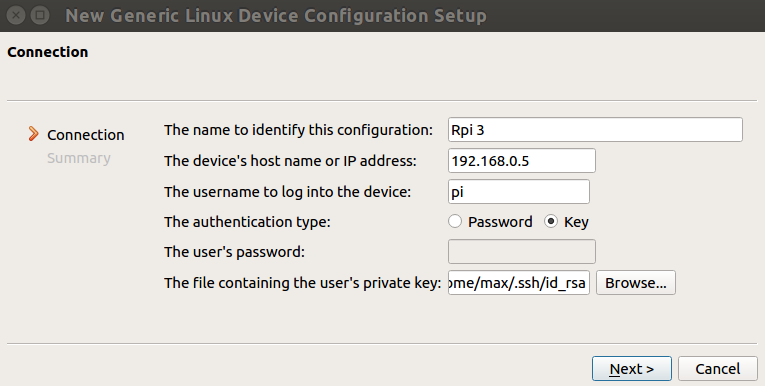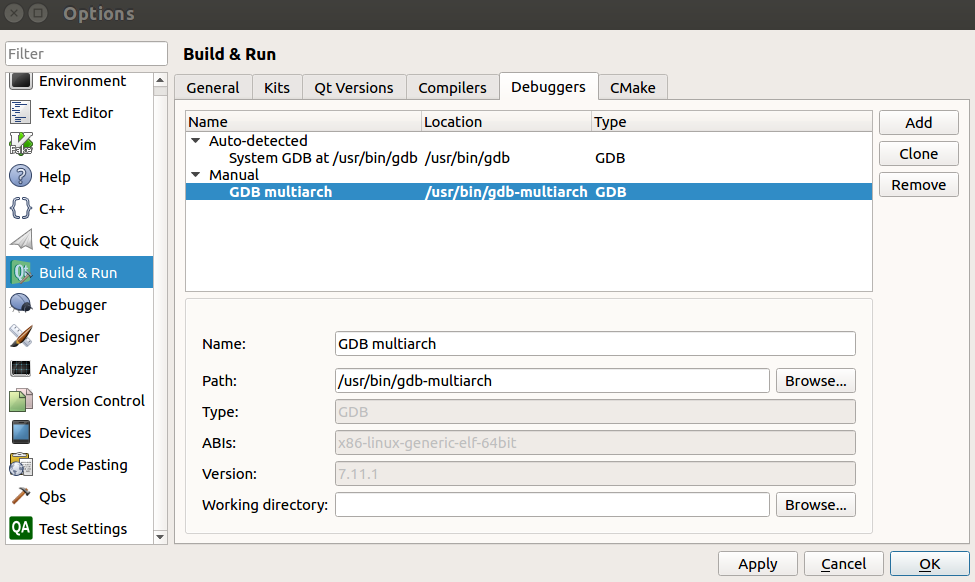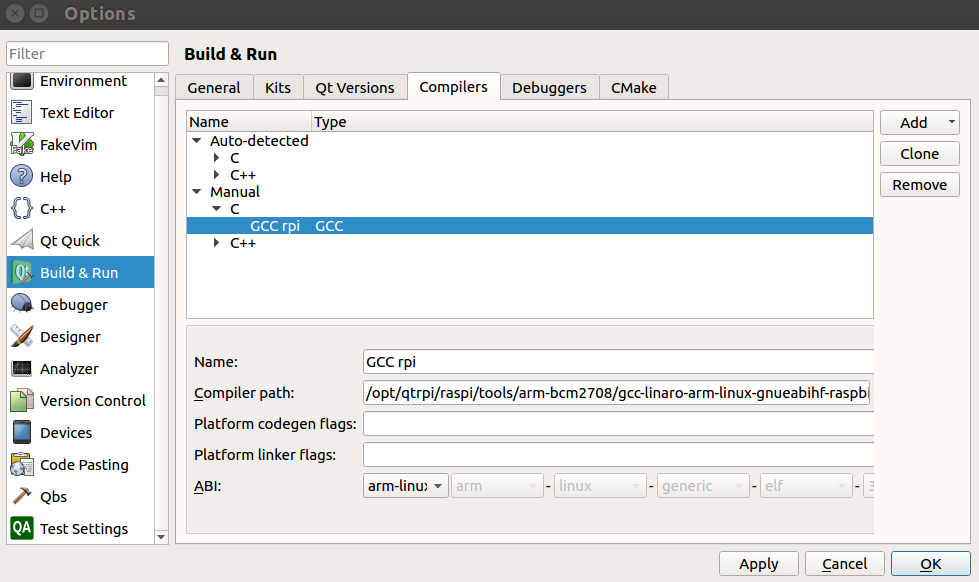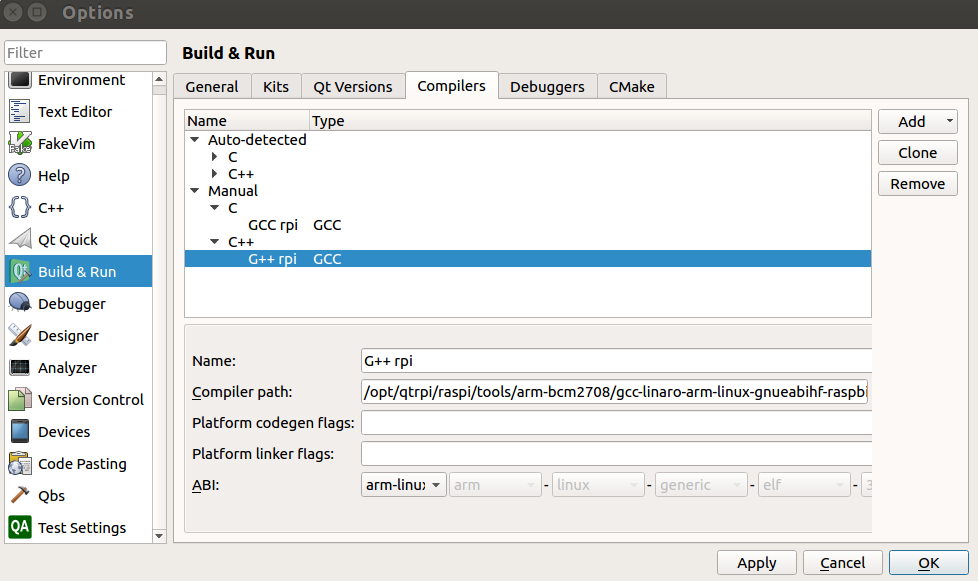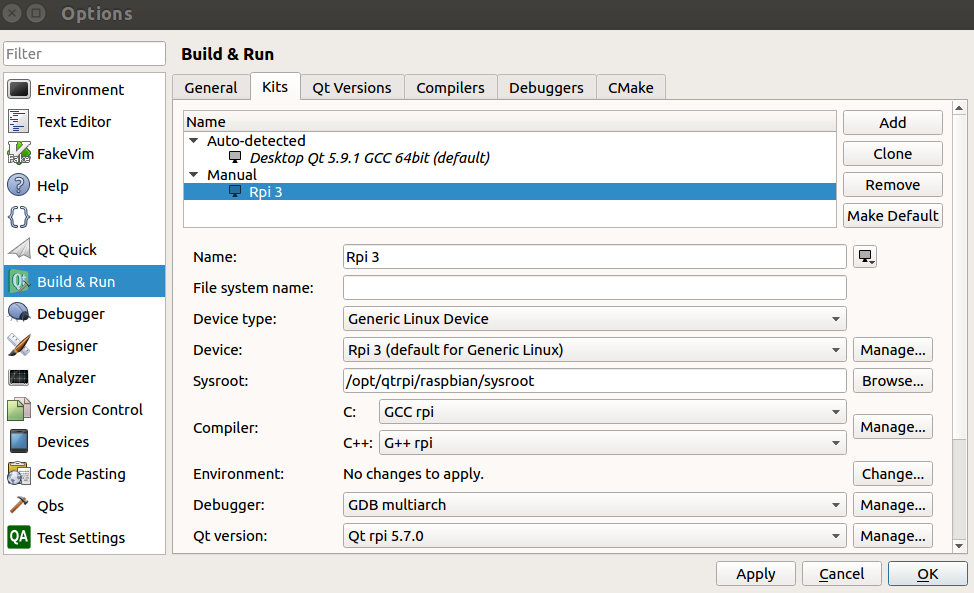Update (Jul 9, 2019):
Now, Raspbian Buster, released on 6/20/2019, has bluez 5.50 by default!
Update (Feb 14, 2018):
If you want to install newer BlueZ on Raspbian Stretch, please see the post below:
Updating BlueZ on Raspberry Pi (5.43 to 5.48)
Update (Sep 8, 2017):
Raspbian Stretch was released on 8/16/2017, and it has BlueZ 5.43 pre-installed. So these steps below won’t be necessary if you are using Stretch. With pre-installed BlueZ 5.43, the on-board Bluetooth chip on Raspberry Pi 3 is working fine so far.
BlueZ is an open source Bluetooth stack for Linux. This is how I updated BlueZ on my Raspberry Pi 3 B+ from 5.23 (pre-installed version in Jessie) to 5.43. The motivation is that I wanted to test a Bluetooth Low Energy (BLE) feature and that is not supported in the original version.
Originally, I tried to update to 5.46 which is the latest version as of 7/27/2017. However, I found that hci tools have been not included in BlueZ since 5.44 for some reason. Since I wanted to use hci tools, I decided to update to 5.43, which still has hci tools.
Also, I should mention one more thing here. After update, I’ve been facing a problem with Raspberry Pi 3’s on-board Bluetooth module. So I decided to use a USB Bluetooth dongle instead. So if you’re planning to use on-board Bluetooth chip, this post is not probably for you…
Here is the list of contents of this post.
Contents
– Assumptions
– Steps
1. Disabling On-board Bluetooth Chip
2. Current Version Check
3. Uninstall Current BlueZ
4. Install BlueZ
5. Bluetooth Service Setting
6. Check If Everything is Fine
Let’s get started.
Assumptions
<Hardware>
– Raspberry Pi 3 B+ with Bluetooth dongle (Panda Bluetooth 4.0 USB Adapter)
<Software>
– Raspbian OS Jessie
– BlueZ (original version:5.23, target version 5.43)
Steps
1. Disabling On-board Bluetooth Chip
1-1. Boot up Raspberry Pi Board. If it’s not set up yet, please refer this post.
1-2. Let’s check if Bluetooth interfaces are recognized.
pi@raspberrypi:~ $ hciconfig -a
hci1: Type: BR/EDR Bus: UART
BD Address: xx:xx:xx:xx:xx:xx ACL MTU: 1021:8 SCO MTU: 64:1
UP RUNNING
RX bytes:1046 acl:0 sco:0 events:52 errors:0
TX bytes:2516 acl:0 sco:0 commands:52 errors:0
Features: 0xbf 0xfe 0xcf 0xfe 0xdb 0xff 0x7b 0x87
Packet type: DM1 DM3 DM5 DH1 DH3 DH5 HV1 HV2 HV3
Link policy: RSWITCH SNIFF
Link mode: SLAVE ACCEPT
Name: 'raspberrypi'
Class: 0x000000
Service Classes: Unspecified
Device Class: Miscellaneous,
HCI Version: 4.1 (0x7) Revision: 0xb6
LMP Version: 4.1 (0x7) Subversion: 0x2209
Manufacturer: Broadcom Corporation (15)
hci0: Type: BR/EDR Bus: USB
BD Address: yy:yy:yy:yy:yy:yy ACL MTU: 310:10 SCO MTU: 64:8
UP RUNNING
RX bytes:947 acl:0 sco:0 events:49 errors:0
TX bytes:2446 acl:0 sco:0 commands:49 errors:0
Features: 0xff 0xff 0x8f 0xfe 0xdb 0xff 0x5b 0x87
Packet type: DM1 DM3 DM5 DH1 DH3 DH5 HV1 HV2 HV3
Link policy: RSWITCH HOLD SNIFF PARK
Link mode: SLAVE ACCEPT
Name: 'raspberrypi #1'
Class: 0x000000
Service Classes: Unspecified
Device Class: Miscellaneous,
HCI Version: 4.0 (0x6) Revision: 0x22bb
LMP Version: 4.0 (0x6) Subversion: 0x22bb
Manufacturer: Cambridge Silicon Radio (10)
It looks both on-board chip and the dongle are recognized correctly. In this case, hci1 is the on-board chip (Broadcom) and hci0 is the dongle (CSR).
(* BD Addresses are replaced with “xx:xx:xx:xx:xx:xx” and “yy:yy:yy:yy:yy:yy”)
1-3. Since I don’t use the on-board BT chip, let’s disable it. Open “/etc/modprobe.d/raspi-blacklist.conf”,
sudo nano /etc/modprobe.d/raspi-blacklist.conf
1-4. Add two lines below and save.
blacklist btbcm
blacklist hci_uart
1-5. Then reboot Raspberry Pi 3.
sudo reboot
1-7. After reboot, type ‘hciconfig -a’ again.
pi@raspberrypi:~ $ hciconfig -a
hci0: Type: BR/EDR Bus: USB
BD Address: yy:yy:yy:yy:yy:yy ACL MTU: 310:10 SCO MTU: 64:8
UP RUNNING
RX bytes:670 acl:0 sco:0 events:46 errors:0
TX bytes:2437 acl:0 sco:0 commands:46 errors:0
Features: 0xff 0xff 0x8f 0xfe 0xdb 0xff 0x5b 0x87
Packet type: DM1 DM3 DM5 DH1 DH3 DH5 HV1 HV2 HV3
Link policy: RSWITCH HOLD SNIFF PARK
Link mode: SLAVE ACCEPT
Name: 'raspberrypi'
Class: 0x000000
Service Classes: Unspecified
Device Class: Miscellaneous,
HCI Version: 4.0 (0x6) Revision: 0x22bb
LMP Version: 4.0 (0x6) Subversion: 0x22bb
Manufacturer: Cambridge Silicon Radio (10)
The on-board chip is successfully disabled.
2. Current Version Check
2-1. BlueZ version can be retrieved by typing:
pi@raspberrypi:~ $ bluetoothctl -v
5.23
2-2. Also, let’s check the Bluetooth related packages.
pi@raspberrypi:~ $ dpkg -l|grep blue
ii bluej 3.1.7b all A simple but powerful Java IDE.
ii bluez 5.23-2+rpi2 armhf Bluetooth tools and daemons
ii bluez-firmware 1.2-3+rpi1 all Firmware for Bluetooth devices
ii libbluetooth3:armhf 5.23-2+rpi2 armhf Library to use the BlueZ Linux Bluetooth stack
ii pi-bluetooth 0.1.3 armhf Raspberry Pi 3 bluetooth
ii pulseaudio-module-bluetooth 5.0-13 armhf Bluetooth module for PulseAudio sound server
pi@raspberrypi:~ $
3. Uninstall Current BlueZ
3-1. Uninstall the current version of BlueZ.
sudo apt-get purge bluez -y
3-2. Remove unnecessary packages.
sudo apt-get autoremove -y
After uninstallation, the package list looks like this. (not sure why libbluetooth3 is still there…)
pi@raspberrypi:~/src/bluez $ bluetoothctl --version
-bash: /usr/bin/bluetoothctl: No such file or directory
pi@raspberrypi:~/src/bluez $ dpkg -l|grep blue
ii bluej 3.1.7b all A simple but powerful Java IDE.
ii libbluetooth3:armhf 5.23-2+rpi2 armhf Library to use the BlueZ Linux Bluetooth stack
4. Install BlueZ
4-1. Update package list and installed packages.
sudo apt-get update && sudo apt-get upgrade -y
4-2. Install dependencies.
sudo apt-get install -y libusb-dev libdbus-1-dev libglib2.0-dev libudev-dev libical-dev libreadline-dev
4-3. Download and extract BlueZ 5.43.
wget www.kernel.org/pub/linux/bluetooth/bluez-5.43.tar.xz
tar xvf bluez-5.43.tar.xz
cd bluez-5.43/
4-4. Configure.
./configure --prefix=/usr --mandir=/usr/share/man --sysconfdir=/etc --localstatedir=/var --enable-experimental --enable-tools --with-systemdsystemunitdir=/lib/systemd/system --with-systemduserunitdir=/usr/lib/system
4-5. Compile the source code.
make -j4
4-6. Install BlueZ.
sudo checkinstall --fstrans=no
You can ‘sudo make install’ instead of ‘sudo checkinstall’ as below:
sudo make install
4-7. Check the version if the installation is successfully done.
pi@raspberrypi:~ $ bluetoothctl -v
5.43
5. Bluetooth Service Setting
5-1. Enable Bluetooth service so that it will start on boot up.
sudo systemctl enable bluetooth
It’ll create symlinks and output like below:
pi@raspberrypi:~/src/bluez/bluez-5.43 $ sudo systemctl enable bluetooth
Created symlink from /etc/systemd/system/dbus-org.bluez.service to /lib/systemd/system/bluetooth.service.
Created symlink from /etc/systemd/system/bluetooth.target.wants/bluetooth.service to /lib/systemd/system/bluetooth.service.
5-2. Reboot Raspberry Pi 3.
sudo reboot
6. Check If Everything is Fine
6-1. After reboot, check if hci is UP.
pi@raspberrypi:~ $ hciconfig -a
hci0: Type: Primary Bus: USB
BD Address: yy:yy:yy:yy:yy:yy ACL MTU: 310:10 SCO MTU: 64:8
DOWN
RX bytes:574 acl:0 sco:0 events:30 errors:0
TX bytes:368 acl:0 sco:0 commands:30 errors:0
Features: 0xff 0xff 0x8f 0xfe 0xdb 0xff 0x5b 0x87
Packet type: DM1 DM3 DM5 DH1 DH3 DH5 HV1 HV2 HV3
Link policy: RSWITCH HOLD SNIFF PARK
Link mode: SLAVE ACCEPT
6-2. If it’s DOWN, then type:
sudo hciconfig hci0 up
6-3. And check again.
pi@raspberrypi:~ $ hciconfig -a
hci0: Type: Primary Bus: USB
BD Address: yy:yy:yy:yy:yy:yy ACL MTU: 310:10 SCO MTU: 64:8
UP RUNNING
RX bytes:1178 acl:0 sco:0 events:65 errors:0
TX bytes:1066 acl:0 sco:0 commands:65 errors:0
Features: 0xff 0xff 0x8f 0xfe 0xdb 0xff 0x5b 0x87
Packet type: DM1 DM3 DM5 DH1 DH3 DH5 HV1 HV2 HV3
Link policy: RSWITCH HOLD SNIFF PARK
Link mode: SLAVE ACCEPT
Name: 'raspberrypi'
Class: 0x000000
Service Classes: Unspecified
Device Class: Miscellaneous,
HCI Version: 4.0 (0x6) Revision: 0x22bb
LMP Version: 4.0 (0x6) Subversion: 0x22bb
Manufacturer: Cambridge Silicon Radio (10)
Now it should be UP and RUNNING.
* If you want Bluetooth adapter powered up automatically at boot, see this.
6-4. Check if Bluetooth service is working.
systemctl status bluetooth
If everything is fine, you should see like:
pi@raspberrypi:~ $ systemctl status bluetooth
● bluetooth.service - Bluetooth service
Loaded: loaded (/lib/systemd/system/bluetooth.service; enabled)
Active: active (running) since Fri 2017-07-28 00:34:23 UTC; 2min 14s ago
Docs: man:bluetoothd(8)
Main PID: 456 (bluetoothd)
Status: "Running"
CGroup: /system.slice/bluetooth.service
└─456 /usr/libexec/bluetooth/bluetoothd
Make sure it’s ‘active (running)’.
6-5. Now you should be able to use bluetoothctl to pair devices.
pi@raspberrypi:~ $ bluetoothctl
[NEW] Controller yy:yy:yy:yy:yy:yy raspberrypi [default]
[bluetooth]#

